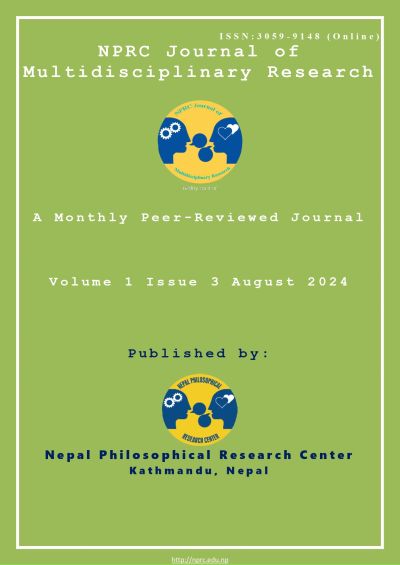Unveiling Global Trends in Reactive and Proactive Aggression: A Cutting-Edge Bibliometric Analysis
DOI:
https://doi.org/10.3126/nprcjmr.v1i3.70065Keywords:
Bibliometric analysis, proactive aggression, reactive aggression, VOSviewer, wordsiftAbstract
This bibliometric mapping discusses the research landscape of proactive and reactive aggression, key authors, collaborative networks, and trends in scholarly publishing for the past two decades. The study, using tools like VOSviewer, shows important patterns in co-authorship, citation networks, and keyword co-occurrence. The leading personalities include Adrian Raine, Paula J. Fite, Richard E. Tremblay, and Paul J. Frick. Heavy contributors to the knowledge about aggression from biological, psychological, and developmental perspectives are identified. Co-authorship is intense, especially on topics dealing with neuro-criminology, childhood and adolescent behavior, and the role of psychopathy in violent behavior.
The analysis shows that from the year 2009, the publication of works has grown rapidly to their peak in the year 2022, reflecting an upward spiral of interest and interdisciplinary research on aggression. Dominant keywords like "aggression," "reactive," "proactive," "psychopathy," and "conduct disorder" point to the core themes of research on emotional regulation, developmental trajectories, and clinical interventions. This review has come to a close that studies in the field of aggression have now developed into a multi-disciplinary science, embracing neuroscience, psychology, criminology, and social science knowledge to further advance the understanding of the underlying mechanisms of aggressive behavior and develop various treatments. Future research will have to go on filling in areas of investigation that are underrepresented, including but not limited to aggression at the interface with particular demographic variables and newer approaches to intervention.
Downloads
Downloads
Published
How to Cite
Issue
Section
License
Copyright (c) 2024 The Author(s)

This work is licensed under a Creative Commons Attribution-NonCommercial 4.0 International License.
This license enables reusers to distribute, remix, adapt, and build upon the material in any medium or format for noncommercial purposes only, and only so long as attribution is given to the creator.





